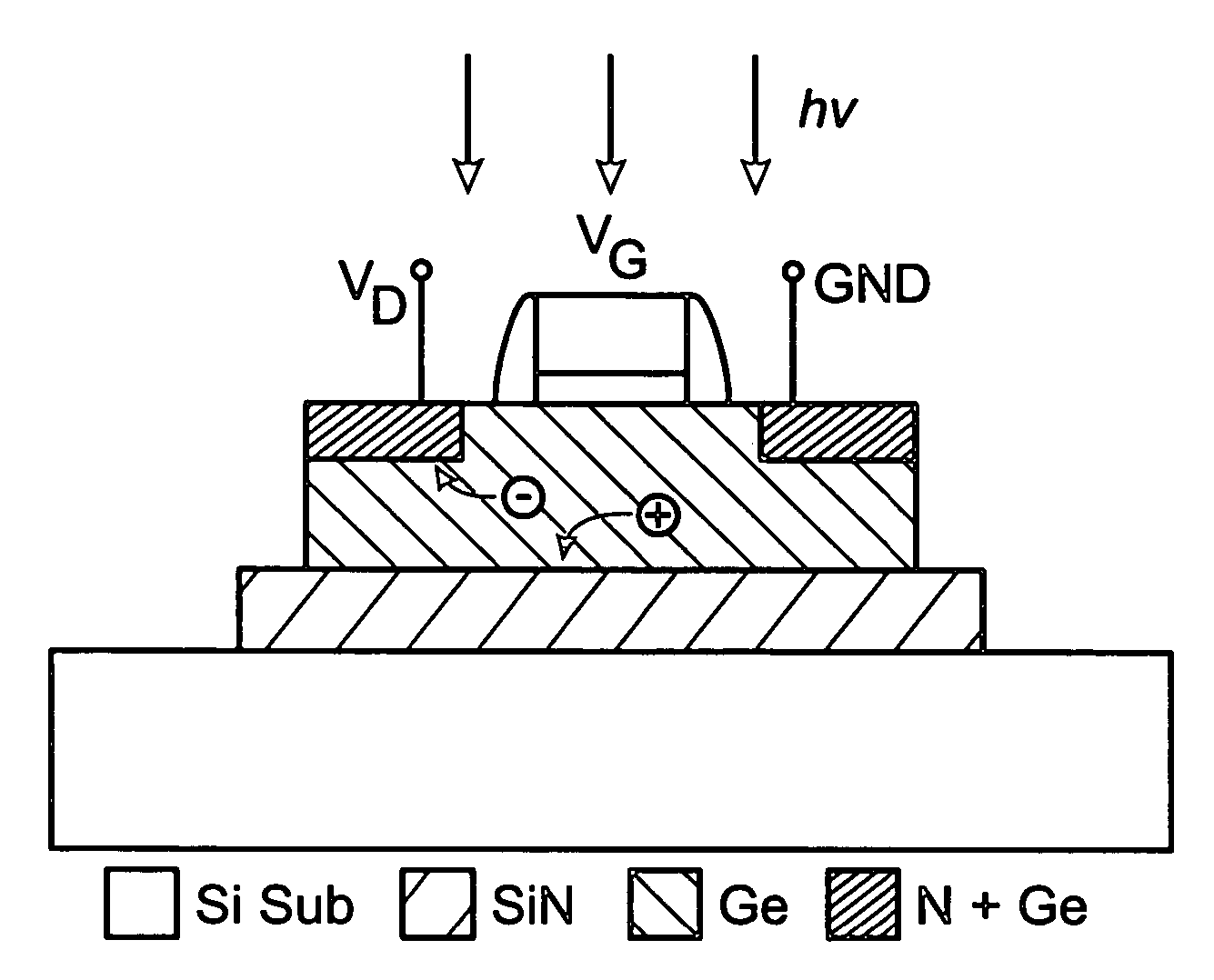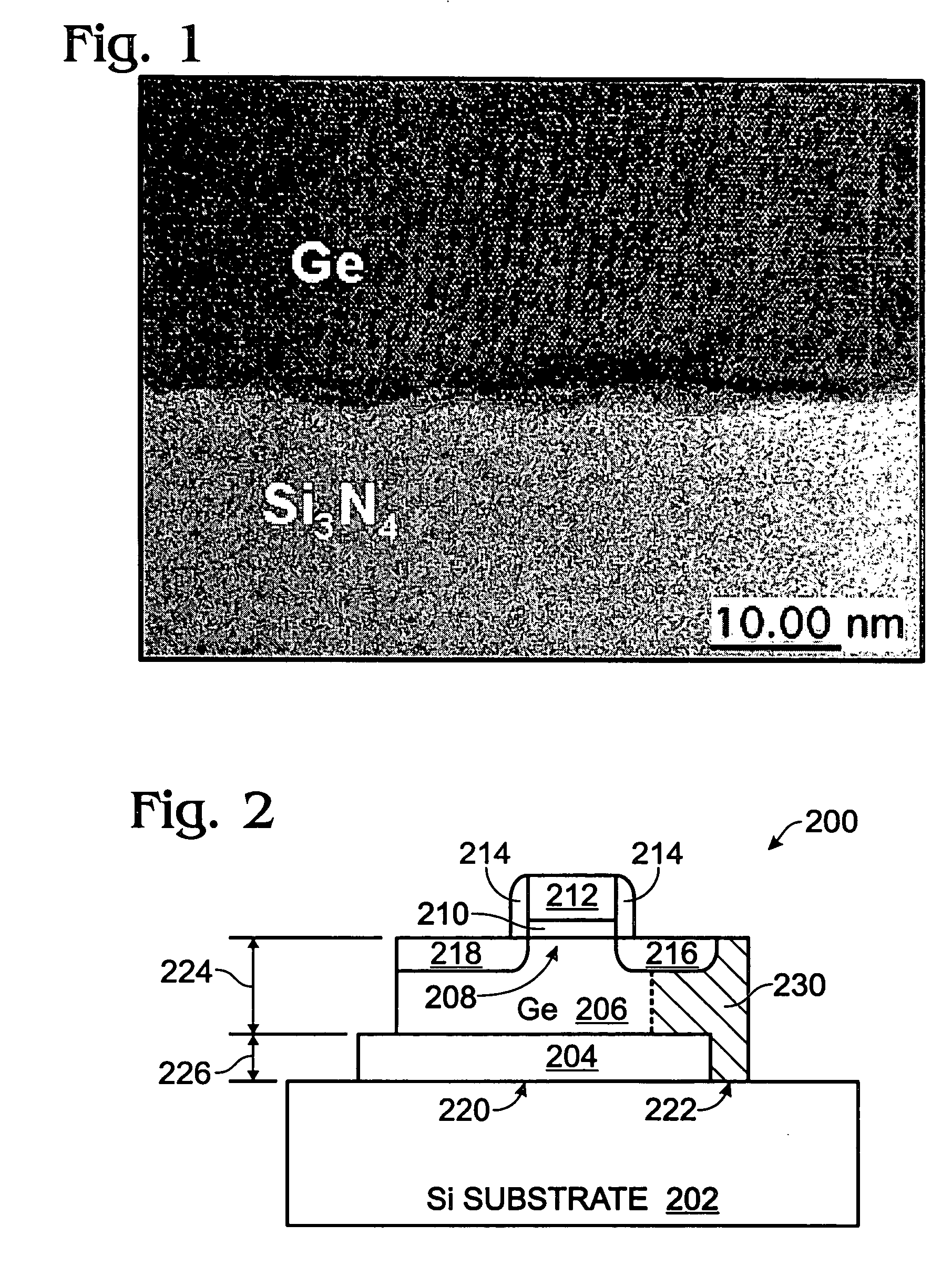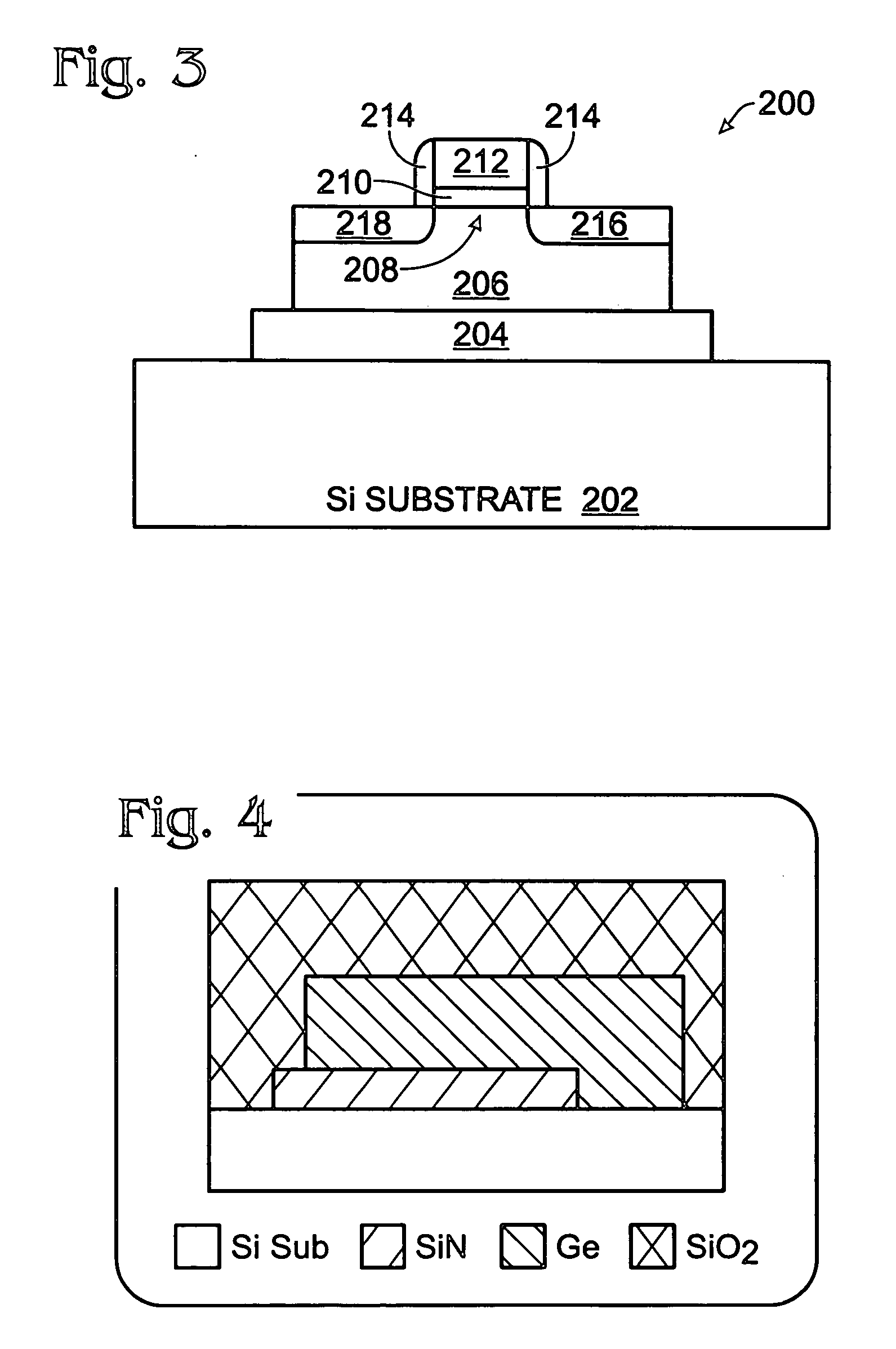Floating body germanium phototransistor
a phototransistor and floating body technology, applied in the field of integrated circuit (ic) fabrication, can solve the problems of imperfect bottom interface between ge single crystal and bottom dielectric layer (si/sub>3/sub>n/sub>4), leakage current in diodes, and deterioration of electrical performance at the bottom interface, so as to minimize the contribution of imperfect bottom interface to the electrical characteristics of the devi
- Summary
- Abstract
- Description
- Claims
- Application Information
AI Technical Summary
Benefits of technology
Problems solved by technology
Method used
Image
Examples
Embodiment Construction
[0021]FIG. 2 is a partial cross-sectional view of a floating body germanium (Ge) phototransistor. The phototransistor 200 comprises a silicon (Si) substrate 202 and an insulator layer 204 overlying the Si substrate 202. An epitaxial Ge layer 206 overlies the insulator layer 204. A channel region 208 is formed in the Ge layer 206. A gate dielectric 210, gate electrode 212, and gate spacers 214 overlie the channel region 208. A source 216 and a drain 218 are formed in the Ge layer 206.
[0022] More specifically, the insulator layer 204 overlies a first surface 220 of the Si substrate 202, exposing a second surface 222 of the Si substrate. The epitaxial Ge layer 206 is formed overlying the insulator layer 204 and the Si substrate second surface 222. Typically, the epitaxial Ge layer 206 has a thickness 224 (above the insulator 204) in the range of 20 to 1000 nm. The insulator layer 204 typically has a thickness 226 in the range of 10 to 500 nanometers (nm).
[0023] In one aspect, the gat...
PUM
 Login to View More
Login to View More Abstract
Description
Claims
Application Information
 Login to View More
Login to View More - R&D
- Intellectual Property
- Life Sciences
- Materials
- Tech Scout
- Unparalleled Data Quality
- Higher Quality Content
- 60% Fewer Hallucinations
Browse by: Latest US Patents, China's latest patents, Technical Efficacy Thesaurus, Application Domain, Technology Topic, Popular Technical Reports.
© 2025 PatSnap. All rights reserved.Legal|Privacy policy|Modern Slavery Act Transparency Statement|Sitemap|About US| Contact US: help@patsnap.com



